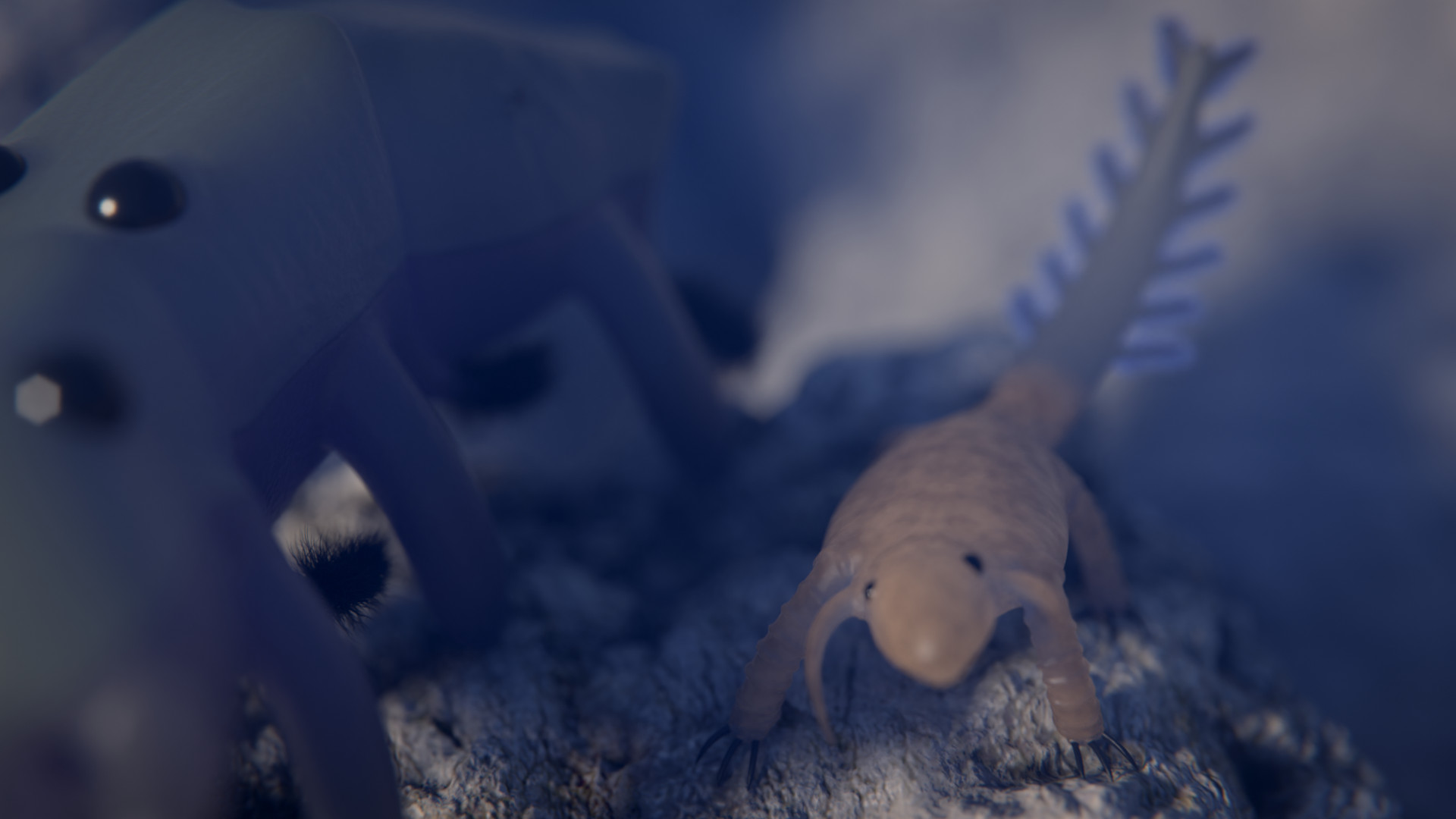Chirarpaz
The miniscule chirapaz seen here near a ypresi is despite it's adorable appearance a voracious predator of anything it can get its limbs around. [Creature design by Louis Corbett]
Basic Information
Anatomy
Vortulex is a genus of small predators well adapted to grasping up prey in their legs, which have evolved to serve as talons, delivering a venomous sting. Descended from basal pseudotetrapods like the bobird, they have elongated the posterior breathing apparatus to serve as a propulsive tail, which beats upwards and downwards rapidly in a cetacean-like form of swimming - an efficient way of increasing the rate of gas exchange in order to fulfill the energetic demands of such aggressive locomotion, although they still spend much time walking. Their more delicate areas are covered by rubbery armour - not completely solid, but tough enough to give them some protection in the increasingly competitive marine environments of Almaishah. They retain all the biological and anatomical features of their ancestors, except with an added larval stage that forms part of Almaishah's zooplanktonic community during the first few days of life.
Genetics and Reproduction
Vortulex is a hermaphroditic organism with 4 paird gonads all connected to the cloaca, the anterior pair produces female gametes and the posterior pair male gametes. Mating occurs with the dominant partner laying eggs, that are then externally fertilized. Dominance is established by a wresting match.
Growth Rate & Stages
After hatching chirarpaz have a planktonic larval stage. In this state, they feed on their fellow zooplankton as well as on phytoplankton, only committing to strict carnivory after settling in the shallows.
Ecology and Habitats
Chirarpaz will eat just about any fauna it can get its limbs around and envenom with its claws. Mostly this is small worms that burrow through the substrate, but it will also take juvenile members of much larger species, such as young rock fruit.
Dietary Needs and Habits
Larval form: most biological matter
Adult form: strict carnivore; will eat anything small enough to tackle
Additional Information
Geographic Origin and Distribution
Chirarpaz live along the western and southern costs of Natash, all of the coasts of Ras al-Kalb, and the all but the northern coasts of Cha Ttang.
Perception and Sensory Capabilities
The eyes are more acute than those of bobird, although still not exceptional. While the chemoreceptive antennae are short they are also very sensitive and are one of the main ways that chirarpaz find their prey.











Comments